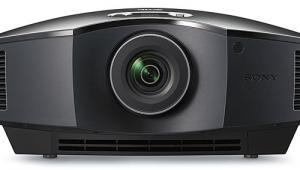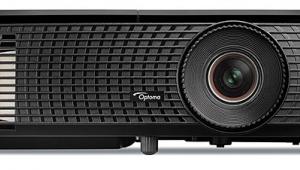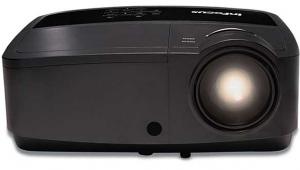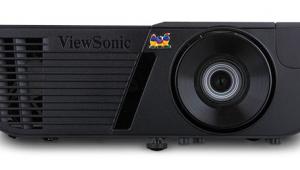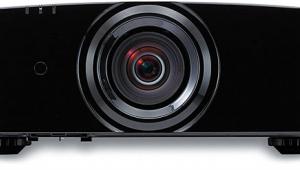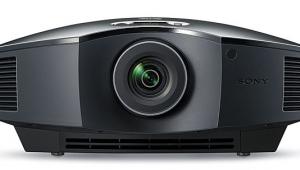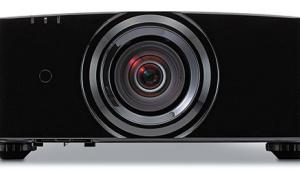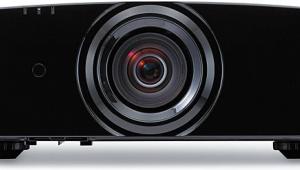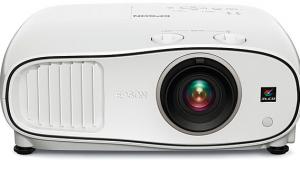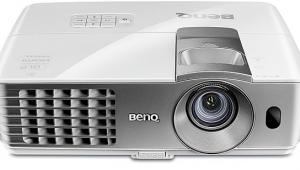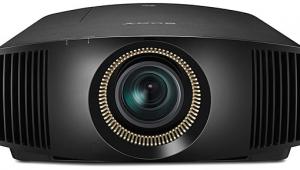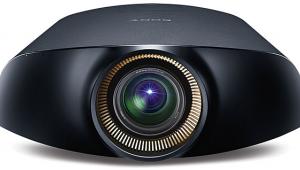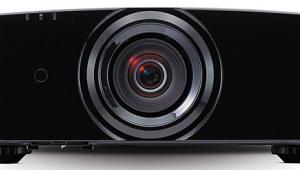Sony VPL-VW95ES 3D SXRD Projector HT Labs Measures
Full-On/Full-Off Contrast Ratio: 21,000:1
All of the measurements were taken with the projector in the Cinema 1 preset with the lamp in high mode. The Gamma Correction preset was selected as Off. All of the calibration was done with the Advanced Iris control in Off, but the contrast ratio measurements were done in a variety of different modes for the iris as noted. The lamp had 20 hours on it during the calibration. All viewing and measurements were done on a 120-inch diagonal Stewart Studiotek 130 screen (1.3 gain).
The full on/off contrast was measured with a Minolta T-10 meter from 9 inches away from the lens face. I tested various configurations in both high and low lamp mode with the iris in both its auto and manual mode. The highest contrast ratio was obtained with the projector in high lamp mode with the dynamic iris in Auto 1. The highest contrast ratio achieved with the dynamic iris in Auto 2 was 19,500:1 in high lamp mode. With the iris in manual mode and closed all the way down (high contrast/low light output), the peak contrast was 6,500:1 in high lamp mode.
As with any dynamic iris system, overall contrast performance would vary considerably as the average picture level changed. Peak black performance was always with a full black out, but black levels were respectable with mixed material.
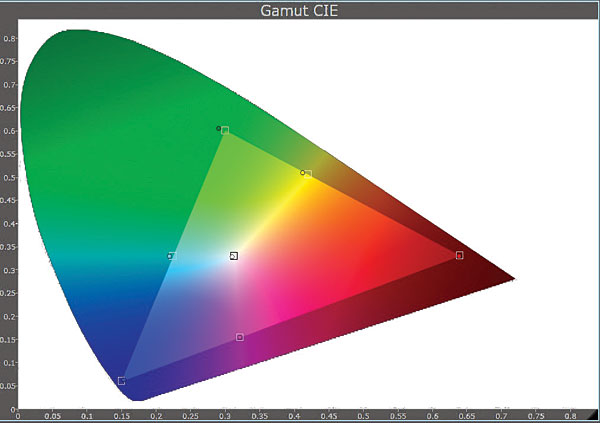
The RGB tables were captured from our calibration workflow in Calman Version 4.4. As you can see from the results, with the projector in the Low 1 preset for color temperature, the out-of-box RGB tracking was respectable with no IRE exceeding 4 Delta E (Delta E is a figure of merit that indicates how closely the result is to the ideal white point of D65. Below 3 is generally considered visibly indistinguishable from a perfect result) with an overall average of 2.5 Delta E. That is remarkable out-of-box performance. Using the Custom 3 color temperature preset (uses the Low 1 as a starting point) I was able to get all of the IRE points to less than 3 with an overall average of 1.4 Delta E.

With the color space set to Standard in the user menus, the color gamut adhered very well to the BT.709 (Rec. 709) HD color gamut. In fact, I don’t think I’ve ever seen a projector adhere this close without a professional calibration. The overall Delta average was a mere 1.3 Delta E. The green measurement showed a bit of a hue shift toward blue, and yellow also showed a similar hue shift toward green, but the highest Delta E measured for any one color was 1.6 (yellow), indicating a measurement lower than the human eye can perceive.
Gamma tracking with the preset gamma set to Off averaged a 2.28 gamma curve. There is no reference gamma curve since gamma is a function of the brightness of white at each IRE compared with 100 IRE. What curve you should use depends on the room you’re viewing in and the contrast capabilities of your projector.—KRD

